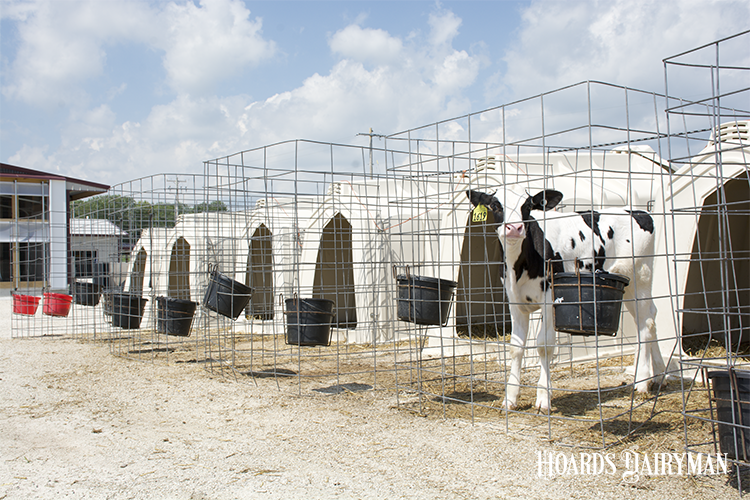
What do you see when you envision the future of calf care on dairy farms?
For dairy researcher Michael Steele, he believes that data and precision management will shape the way we raise calves. During the Dairy Calf and Heifer Association’s annual conference, the University of Guelph professor shared his thoughts on calf management opportunities in the next decade.
“I think there is a lot of potential to improve how we raise animals, especially calves, using precision management tools,” Steele said. He applauded the farmers, herd managers, veterinarians, and nutritionists that utilize health scoring systems and record data. The next step is using this information to put standard operating procedures in place that will dictate how sick animals are treated and when antimicrobials are used.
While Steele said there are a growing number of “fancy gadgets” available to help track calf health and growth, one of the most valuable pieces of information farms could collect only requires a scale.
“We need to start weighing our calves and recording this data,” he stated. From this, average daily gain can be calculated. When a farm knows this information, they have the ability to change their management based on this data.
More specifically, Steele said that a calf’s feeding program could be tailored to its size, rather than implementing a one size fits all approach. He used the example of two calves, one weighing about 75 pounds at birth and another weighing 120 pounds.
“These are different animals, and their physiology is different,” he said. “Shouldn’t we be feeding them differently based on their body weight and average daily gain?”
He noted that some automated feeding systems are collecting data such as body weight, plus other details such as milk consumption, drinking speed, and number of visits to the feeder. He encouraged farmers to use this data more. For instance, a calf that is sick is likely to have a reduced drinking speed a few days prior to showing clinical symptoms. “That would be the optimum time to implement a nutritional strategy,” Steele said.
Data could also help farms tailor the weaning process. He shared that, if average daily gain and starter intake can be tracked, ideal timing of weaning for individual calves can be assessed. If a calf is approaching weaning age but has low starter consumption, it may benefit from a delayed weaning until intake is up.
As we move forward, Steele predicts that more farms will be using data to individually feed animals. “When we have data coming in, we are going to be feeding more individualized programs to calves. We are seeing that in piglet industry right now,” he said.
“Stay tuned on this,” he continued. By collecting more data and then utilizing it, Steele said farms will be able to make more informed decisions in the future.








